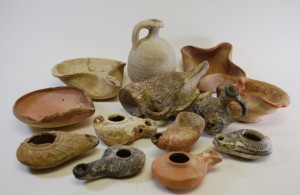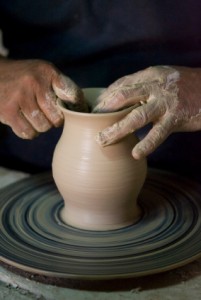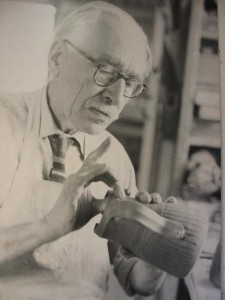
The ancient Greek philosopher, Empedocles, defined the universe as being composed of four elements: earth, air, fire and water. Long before Empedocles, potters were concerned with these elements, essential to the making of pottery. Artists who create such beautiful objects have learned an ancient craft and employ a unique discipline in their pottery making.
I have been talking about the new building going up at LSUA for some time now. The building is called MPAC – Multi-Purpose Academic Building. The tag doesn’t do it justice. I often ride by the site to check the progress of what will be the new home for arts at LSUA. I am intrigued by the possibilities that this edifice will provide the arts in future years. Having worked for 40+ years in a “temporary” structure with makeshift fine arts labs, I eagerly anticipate working and teaching in this state-of-the-art construction. One of those areas will be ceramics. We have taught ceramics at LSUA since the school’s inception, but never with the facilities that will now be available. Ceramics classes at varying levels are scheduled for the fall semester, opening up a world of creativity and opportunity to make pottery with the finest equipment available.
The many types of clay can easily be classified into two essential groups: residual clay, which has largely remained at the original site of decomposed rock; and sedimentary clay that, by wind or running water, has been transported far from the site of the parent rock. The perfect clay is seldom found. It will not be plastic enough, an unacceptable color, or not able to be fired at the desired temperature. To achieve a workable clay body, the potter often has to mix clays.
Artifacts of fired clay from ancient civilizations are the most valuable tools for the study of the archeology and history of a culture. Its indestructible nature provides solid clues to the traditions and practices of ancient peoples. What readily comes to mind is pottery used for funerary offerings. Highly decorated and intended for one-time use, funeral urns, grave markers, etc, give us an inside view of the deceased and their cultures. The ancient potter held a low social status, a craftsman whose work was a simple response to the needs of the community for utilitarian objects. There is no historic precedent for artistic individuality and varying methods so prevalent among artists today. Pottery saw a conservative and very slow evolution

Pottery grew out of the Neolithic tribes of Mesopotamia and the ancient Middle East. Although different groups produced different styles of pottery, there are consistent characteristics throughout: the use of repetitive patterns in a symmetrical composition; the use of curved forms; and the use of brightly colored decoration. From Crete to Greece to Etruscan Italy, the evolution of pottery depended on the social and political climate of the civilization. Even in Western Europe, the development of pottery techniques was drastically affected by the withdrawal of the Romans from Britain. Not until the tenth century did the use of the wheel and lead glaze return to England through Anglo-Saxon trade with Continental Europe. Renaissance pottery was strongly influenced by the Mozarabic (Spanish-Arabic) tradition. The pottery was imported into Italy by way of the island of Majorca, thus it was called majolica style.

With twentieth-century potters came the revival of interest in ancient techniques and the native pottery of both Eastern and Western cultures. England’s Bernard Leach can be credited with much of the revival of hand thrown functional ware. Leach went to Japan at the age of 21 to study the ancient techniques. He became one of the few Western students of Ogata Kenzan, the 6th Kenzan master of the Japanese line of traditional potters. His studies resulted in a beautiful blending of East and West in his mastery of the art of Raku ware.










